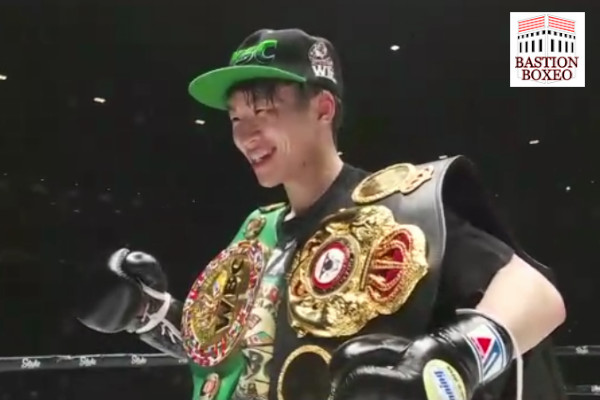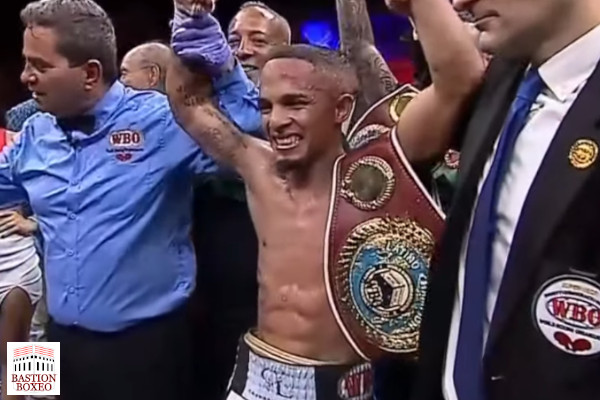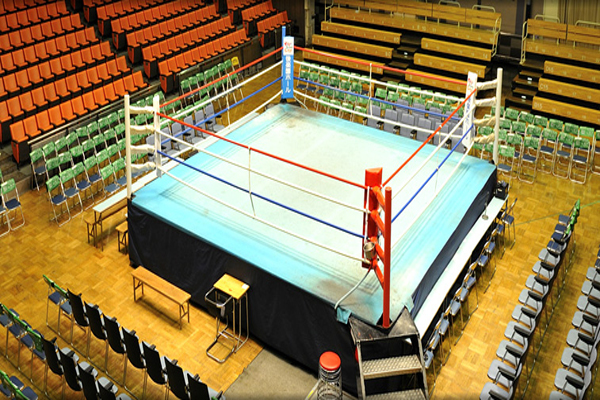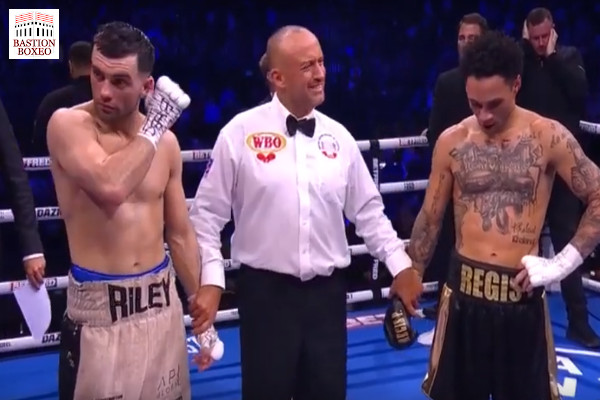Kenshiro Teraji sacó su mejor versión cuando menos se esperaba para anular y vapulear a Hiroto Kyoguchi en unificación
Daniel Pi
@BastionBoxeo
Super Arena, Saitama, Japón. Unificación de los cinturones mundiales WBC y WBO del peso minimosca.
En las grandes noches es cuando los grandes boxeadores brillan con más fuerza para estar a la altura de las circunstancias. En cambio, Hiroto “Mad Boy” Kyoguchi 16(11KO)-1(1) ofreció la peor actuación de su carrera en la mayor pelea de su trayectoria profesional, continuando una línea de atroces elecciones estratégicas en las que ha batallado descarnadamente en corta con temibles pegadores y ha peleado tácticamente contra púgiles hábiles y de distancia larga.
En cualquier caso, si Kyoguchi fue totalmente diseccionado en el combate esto es mérito también de un extraordinario Kenshiro “The Amazing Boy” Teraji 20(12KO)-1(1), que pese a no ser considerado favorito (ni mucho menos) después de ser batido por Masamichi Yabuki, ofreció una actuación perfecta para imponerse por KOT en el séptimo round, convertirse en monarca unificado y surgir como evidente número 1 de la división.
Sin que su adversario le presionase, Teraji hizo valer inicialmente su hábil jab y sus directos diestros mientras giró alrededor de Kyoguchi, que estuvo demasiado lejos de su rival y demasiado inactivo. Por ello, Teraji fue entrando y saliendo con fluidez y anotándose rounds con sus rectos y sus ganchos abajo ante un Kyoguchi que sólo ocasionalmente llegaba con algún buen uppercut por dentro. Es más, cuando hizo retroceder a su contrincante, Kyoguchi en lugar de dar continuidad a sus acciones incluso dio un paso atrás.
Así, Teraji se creció y empezó a sacar precisos derechazos en un altísimo número en el cuarto asalto y sacudió a su contrincante con uppercuts y hooks. Ante todo ello, Kyoguchi ni siquiera parecía el mismo de siempre, puesto que en lugar de combatir temerariamente asumiendo enormes riesgos, se mostraba cohibido y se centraba en bloquear. De ese modo, no fue sorprendente que en el quinto asalto fuese derribado por un nuevo derechazo.
En la reanudación Kyoguchi fue vapuleado sin respuesta en las cuerdas, pero dando una muestra pequeña de lo que es capaz, aprovechó que Teraji cometió el error de trabajar cuerpo a cuerpo (el estilo que peor se le da) para responder en épicos intercambios con uppercuts y hooks y dejarlo dañado. Aun así, Kyoguchi no explotó sus éxitos, y en el sexto y el séptimo episodio fue aguijoneado por jabs y martilleado por más directos diestros hasta que, totalmente roto, cayó sobre las cuerdas y el árbitro paró el choque.
Según se informó, existe un acuerdo según el cual Jonathan González ha aceptado unificar su título WBO contra el ganador del Teraji-Kyoguchi, por lo que de ser esto cierto a continuación deberíamos ver una triple unificación de coronas. En ella, comparando la actuación de González ante Iwata y la de Teraji ante Kyoguchi, seguramente el japonés partirá como claro favorito para, si vuelve a rendir a ese nivel, lograr una clara victoria y acercarse al Salón de la Fama.

Kenshiro Teraji offered his best version when least expected to neutralize and pummel Hiroto Kyoguchi in unification of light flyweight belts
Daniel Pi
@BastionBoxing
Super Arena, Saitama, Japan. Unification of the WBC and WBO light flyweight world belts.
On the big nights is when the great boxers shine brightest to rise to the occasion. Instead, Hiroto “Mad Boy” Kyoguchi 16(11KO)-1(1) delivered the worst performance of his career in the biggest fight as a professional, continuing a line of atrocious strategic choices in which he has brutally battled at short range with fearsome punchers and has boxed tactically against skilled long-distance fighters.
In any case, if Kyoguchi was totally dissected in the bout, this was also due to the extraordinary level shown by Kenshiro «The Amazing Boy» Teraji 20(12KO)-1(1), who despite not being considered a favorite (he was far from it) after being beaten by Masamichi Yabuki, he offered a perfect performance to win by TKO in the seventh round, become unified champion and emerge as the clear number 1 in the division.
Without receiving pressure from his opponent, Teraji imposed his skillful jab and his sharp right hands as he moved around Kyoguchi, who was too far away from his opponent and too inactive. Teraji went in and out smoothly, winning rounds with his straight shots and hooks down against Kyoguchi, who only occasionally landed a good counter uppercut. Moreover, when Kyoguchi made his opponent move back, instead of continuing his actions he stopped advancing.
Thus, Teraji accumulated confidence and began to deliver precise right hands in a very high number in the fourth round, rocking his opponent also with uppercuts and hooks. In the face of this attacks, Kyoguchi didn’t seem himself, since instead of fighting recklessly taking huge risks, he was hesitant and tepid and he just focused on blocking. So it was not surprising that in the fifth round Kyoguchi was dropped by another right hand.
At that restart Kyoguchi was beaten on the ropes without answer. But then he showed a bit of what he is capable of and, taking advantage of the fact that Teraji made the mistake of working at close range (style in which he is less effective), battled in epic exchanges, connecting uppercuts and hooks that hurt his opponent. Still, Kyoguchi did not follow up on his successes and in the sixth and seventh rounds he was controlled by jabs and hammered by more right hands until he fell on the ropes and the referee stopped the fight.
Reportedly, there is an agreement according to which Jonathan González accepted to unify his WBO title against the Teraji-Kyoguchi winner. So if this is true, then we should see a triple unification of belts next. In it, comparing González’s performance against Iwata and Teraji’s performance against Kyoguchi, the Japanese will surely be the clear favorite for (if he performs at that level again) achieving a clear victory and move closer to the Hall of Fame.










